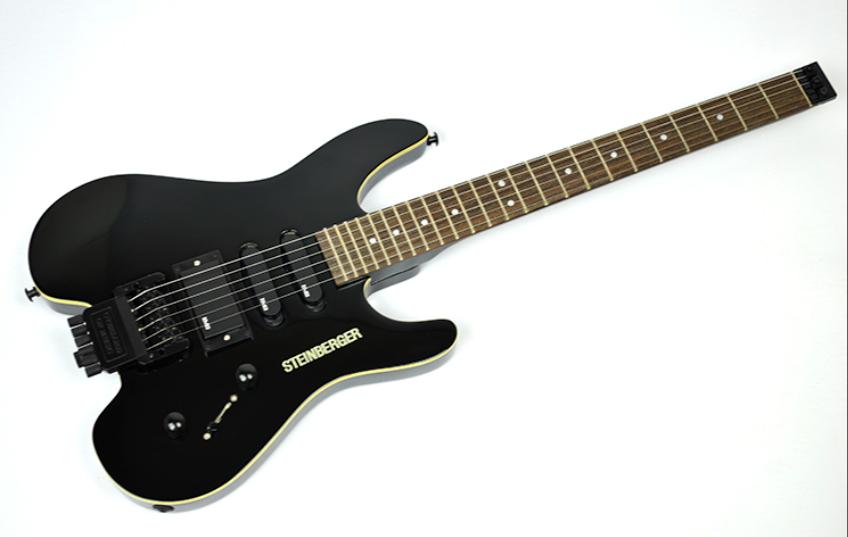Do you want to learn about headless guitars? You're in the right place! In this blog post, we will discuss everything you need to know about these unique instruments. We'll talk about what they are, how they work, and some of the pros and cons of using them. So if you're curious about headless guitars, read on!
What is a headless guitar?
The first commercially available headless guitar was the Steinberger XL-25 in 1984. Headless guitars are typically electric guitars that have no headstock. Instead, the tuning machines are located in the body of the guitar. This makes the instrument more compact and easier to transport than traditional guitars. This means that the tuning pegs are located on the body of the guitar, usually at the base of the neck. The benefit of this design is that it can make the guitar lighter and more balanced. It also allows for easier access to the higher frets.

How do a headless guitar work?
The strings on a headless guitar are attached to a tailpiece, which is located in the body of the guitar. The strings are then routed through the body to the tuning machines, which are located on either side of the guitar. This design allows for easy string changes and makes the instrument more durable.
The tuning machines are located in the body of the guitar and are attached to the strings. When you tune the guitar, you turn the tuning machines on the body instead of on the headstock. This can be done with a standard tuning key or an electronic tuner.
What are some pros and cons of using a headless guitar?
There are several benefits to using a headless guitar. One is that it can be more comfortable to play since there is no heavy headstock on one end. This can help you avoid neck pain when playing for long periods of time. Another benefit is that headless guitars are often more balanced than traditional guitars. This can help you when playing standing up or in other positions where the weight of the instrument might be a factor. They are also more compact and easy to transport, which can be a great advantage for gigging musicians. Headless guitars also tend to be more durable since there is no headstock that can break or snap off. Besides, the strings of the headless guitar are less likely to break and are easy to change.
However, there are also some drawbacks to using a headless guitar. One is that they can be more expensive than traditional guitars. Another downside is that they can be harder to tune since the tuning machines are located in the body of the guitar. This can make it difficult to see what you're doing when tuning. Additionally, headless guitars can be more difficult to play for beginners. This is because there is no headstock on the end of the guitar to help you keep your hand in position.

How to play a headless guitar?
Now that we've covered some of the basics, let's talk about how to play a headless guitar. The first thing you need to do is tune the instrument. This can be done with an electronic tuner or by ear. Once the guitar is in tune, you can start playing!
There are a few things to keep in mind when playing a headless guitar. First, you may find that the tuning is a bit more sensitive than on traditional guitars. So be careful not to over-tighten the strings or they may break. Second, the pickups can be more susceptible to feedback, so watch out for that when playing in loud environments.
With those things in mind, you can start playing and experimenting with the headless guitar. There's no right or wrong way to play it - it's all about finding what works best for you. So have fun and experiment!
So, are headless guitars right for you? That's up to you to decide! But hopefully, this blog post has given you a better understanding of what they are and how they work. Thanks for reading!
